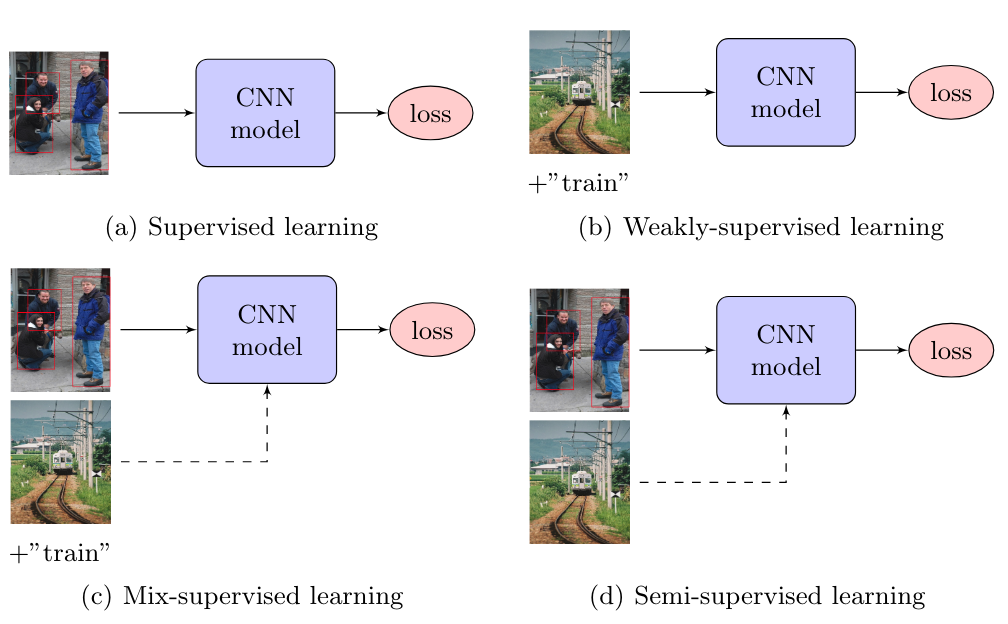Deep learning basing on EM
Published:
 Training settings for object detection using CNN models. (a) is supervisedlearning which uses instance-level labels (red bounding boxes in the image). (b) isweakly-supervised learning where only image-level labels (”train”) are used. (c) is mix-supervised learning where both image-level labels (”train”) and instance-level labels(red bounding boxes) are used. (d) is semi-supervised learning where instance-levellabeled images and unlabeled images are used
Training settings for object detection using CNN models. (a) is supervisedlearning which uses instance-level labels (red bounding boxes in the image). (b) isweakly-supervised learning where only image-level labels (”train”) are used. (c) is mix-supervised learning where both image-level labels (”train”) and instance-level labels(red bounding boxes) are used. (d) is semi-supervised learning where instance-levellabeled images and unlabeled images are used
I. Expectation Maximization
We need to understand how the EM algorithm works (see ).
II. Basic deep learning with EM approach.
The approach is based on the EM principes.
- We start by training an initial deep learning model such as an image classifier or an object detector
- EStep: We estimate the labels of the unlabeled data in semi-supervised learning or (the missing labels in weakly-supervised learning) on the interval of T iterations
- MStep: Using the existing labels and the newly estimated labels as Ground-Truth, we can continue to train the model with a new a specific or an dynamic weighting loss function and training schema (the importance of estimated labels are normaly less than the existing labels)
- Estep and MStep is repeated with the interval T iterations.
Note that the pseudo-label approach often using in competitions as Kaggle is the naive version of this method.